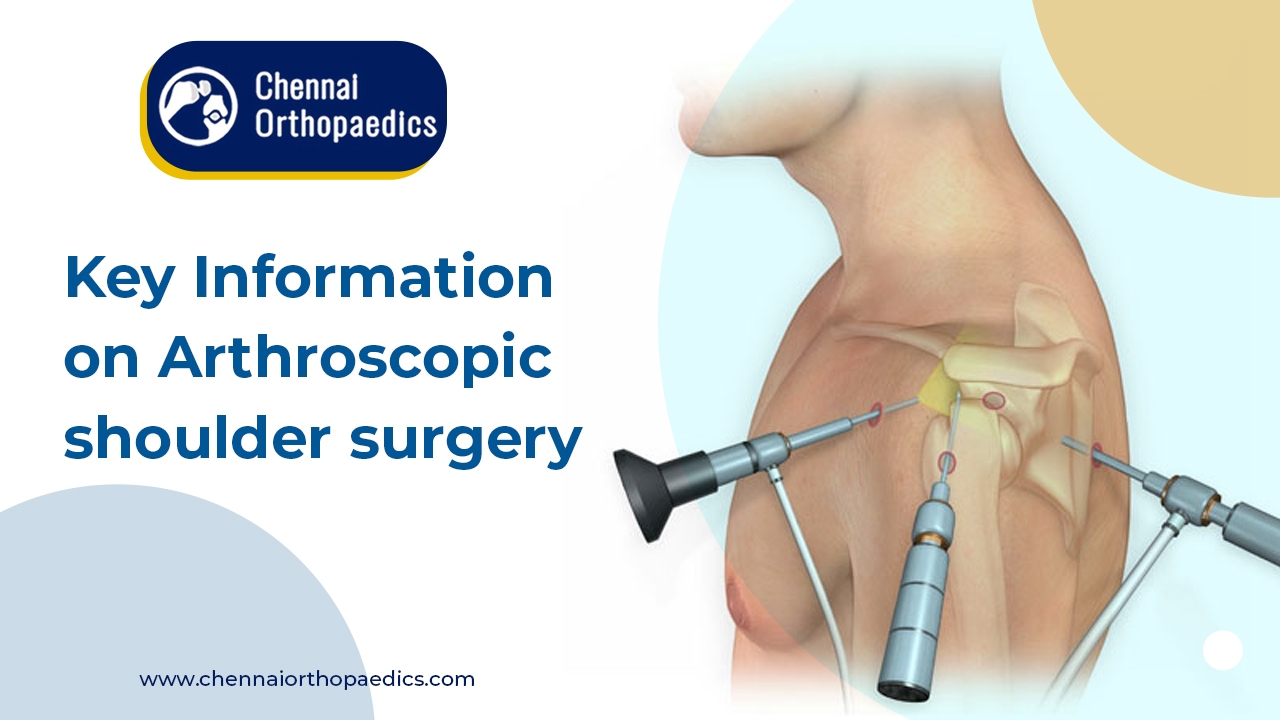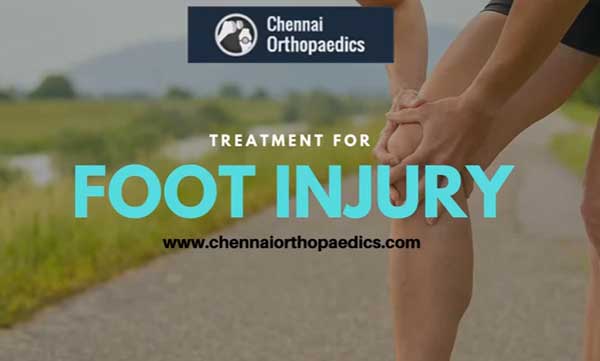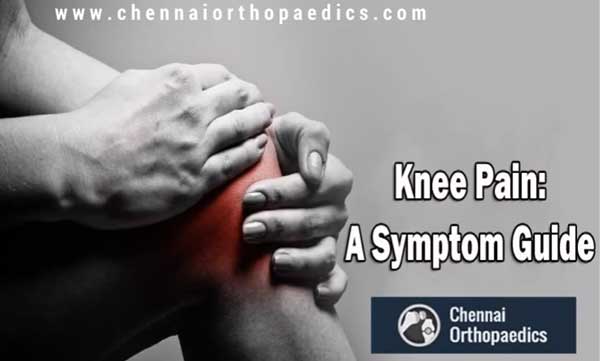Date :19-Jun-2024
Key Information on Arthroscopic shoulder surgery
Arthroscopy shoulder surgery is a standard procedure for treating a variety of shoulder conditions. Many benefits of this minimally invasive surgical approach over open surgery include quicker recovery times, less pain after surgery, and smaller scars. When patients and healthcare professionals are informed on the key details surrounding arthroscopic shoulder surgery, they can make well-informed decisions about their course of treatment. This article discusses the principles of arthroscopic shoulder surgery, prevalent diseases treated, the actual procedure, benefits, dangers, and the recovery time.

During arthroscopic shoulder surgery, a tiny camera known as an arthroscope is inserted through a tiny incision into the shoulder joint. The surgeon can see a detailed view of the inside of the joint thanks to the arthroscope's ability to transmit images to a monitor. To restore the shoulder, more tiny incisions are made for the surgical equipment. Numerous shoulder issues can be identified and treated with this technique.
Common Conditions Treated with Arthroscopic Shoulder Surgery
Rotator Cuff Tears: Ankle sprains and strains in the rotator cuff, a collection of tendons and muscles that maintain the shoulder, are frequently caused by tears. The surgery can relieve pain and mend broken tendons.
Shoulder Impingement Syndrome: This happens when shoulder movements compress the rotator cuff tendons, resulting in discomfort and irritation. Inflamed tissue and bone spurs can be removed during arthroscopic surgery to ease discomfort.
Labral Tears: The labrum is a cartilage ring that encircles the shoulder socket. Trauma or prolonged motion can cause tears. The labrum can be repaired, or the injured section removed via arthroscopy.
Shoulder Instability: By strengthening the ligaments and replacing any damaged components, an arthroscopic treatment for recurrent shoulder dislocations can stabilize the joint.
Frozen Shoulder (Adhesive Capsulitis): When conservative measures have failed, arthroscopic surgery can increase range of motion by releasing the tight capsule that surrounds the shoulder joint.
The Arthroscopic Shoulder Surgery Procedure
Preparation: Depending on how much of the surgery is done, the patient is either put under general or regional anesthetic. Sterile conditions are used to clean and prepare the shoulder.
Incisions: Around the shoulder joint, tiny incisions called portals are created. The majority of these wounds are smaller than half an inch.
Insertion of Arthroscope: The arthroscope is inserted through one of the incisions, providing the surgeon with a clear view of the inside of the shoulder joint.
Surgical Repair: Surgical instruments are inserted through the other incisions to perform the necessary repairs, such as trimming damaged tissue, reattaching torn tendons, or removing bone spurs.
Closure: Once the surgery is complete, the instruments and arthroscope are removed, and the incisions are closed with sutures or surgical tape. A sterile dressing is applied to the shoulder.
Benefits of Arthroscopic Shoulder Surgery
Minimally Invasive: Smaller incisions lead to less tissue damage, reduced pain, and quicker recovery times compared to open surgery.
Reduced Risk of Infection: The smaller incisions lower the risk of infection and postoperative complications.
Faster Recovery: Patients generally experience shorter hospital stays and quicker return to daily activities and sports.
Improved Precision: The arthroscope provides a magnified view of the shoulder joint, allowing for more precise diagnosis and treatment.
Recovery Process
Immediate Postoperative Care: After surgery, the patient’s shoulder is typically placed in a sling to immobilize it and allow for healing. Pain management is achieved through medications.
Physical Therapy: Physical therapy usually begins shortly after surgery to restore range of motion and strength. The intensity and duration of therapy depend on the specific procedure performed.
Gradual Return to Activities: Patients can gradually return to normal activities as they heal. Full recovery can take several weeks to months, depending on the extent of the surgery and the individual's health.
Conclusion
Many shoulder disorders can be recognized and treated with minimally invasive arthroscopic shoulder surgery. Compared to open surgery, it offers a quicker recovery time, causes less discomfort, and has a lower chance of complications.
One of the top arthroscopic and joint replacement surgeons in the field is Dr. Bharani Kumar Dayanandam. Currently working in Apollo Hospitals in Ayanambakkam, Chennai, as a Consultant Trauma & Orthopaedic Surgeon (Knee and Shoulder Specialist), Dr. Bharani Kumar Dayanandam is well-known for his skill in treating complicated shoulder issues with cutting-edge arthroscopic methods. His dedication to cutting-edge surgical techniques and patient care emphasizes the noteworthy developments in arthroscopic shoulder surgery, offering patients practical answers and enhanced quality of life.
Authored By Dr Bharani Kumar Dayanandam,MBBS,Orthopedic Surgeon














